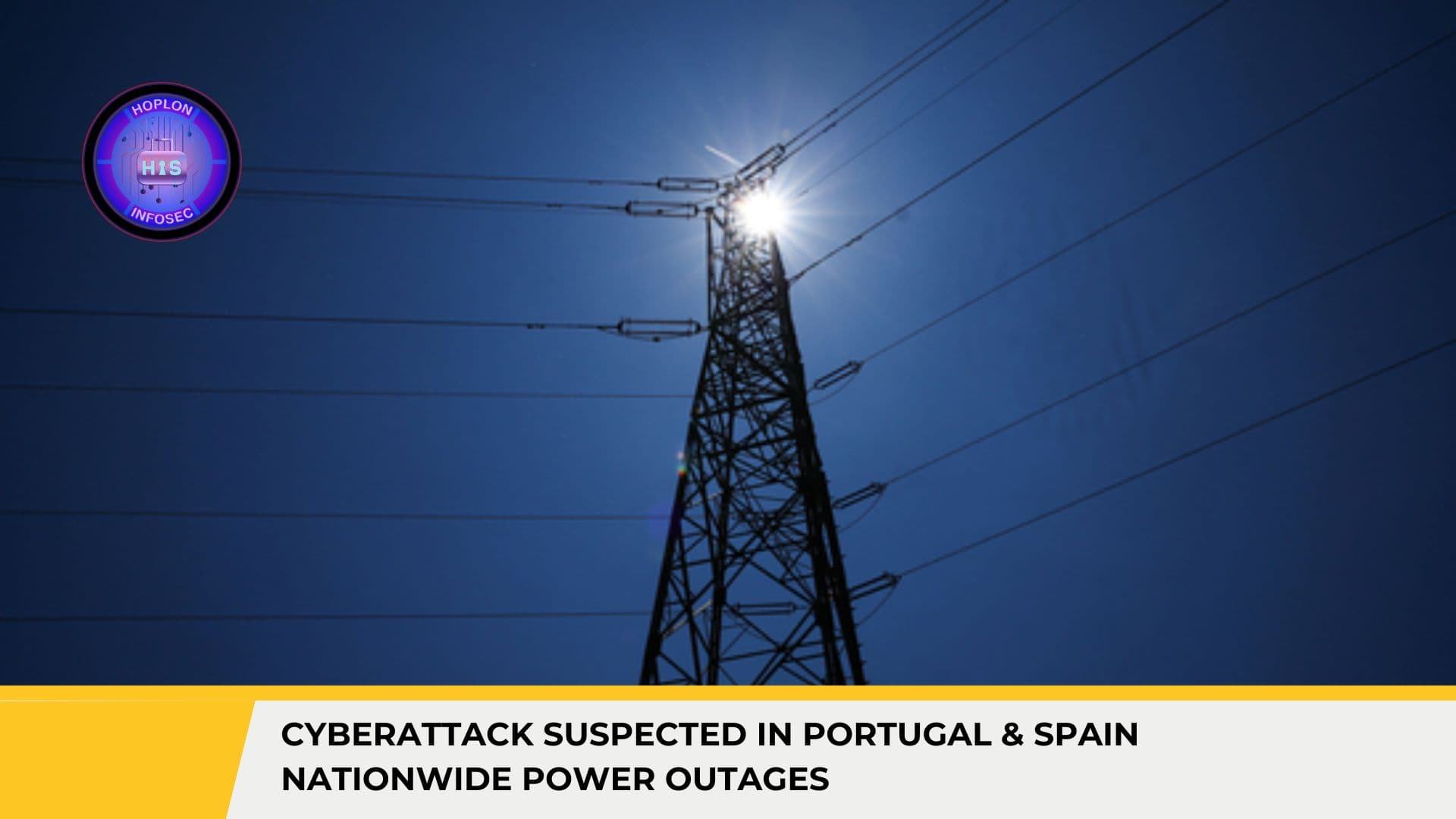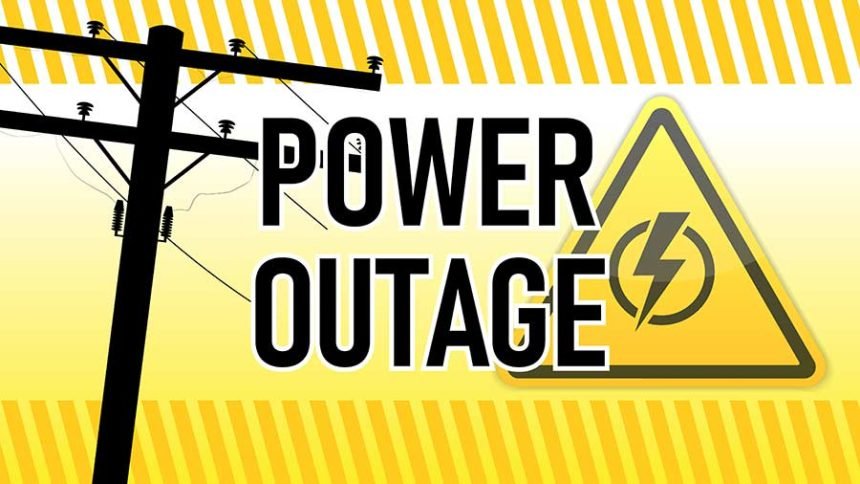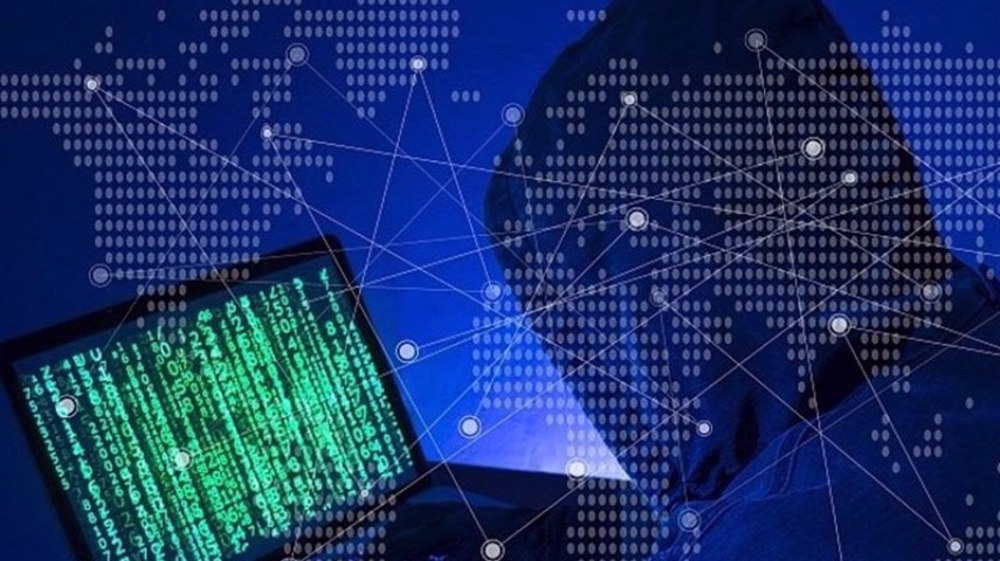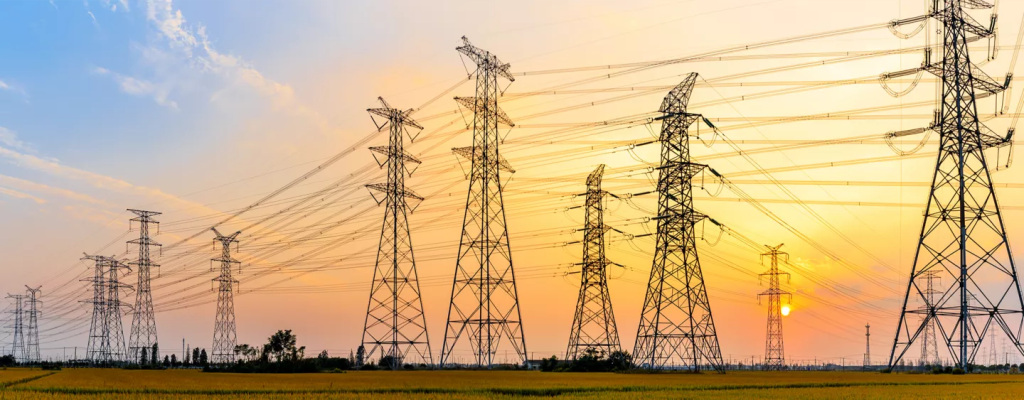Cyberattack Suspected Triggers Widespread Power Blackout Across Spain and Portugal

Hoplon InfoSec
28 Apr, 2025
On April 28, 2025,Cyberattack Suspected in Portugal & Spain Nationwide Outages. At approximately 12:30 CET (10:30 GMT), the electrical grid’s abrupt and total collapse swept across mainland Spain and Portugal. In mere seconds, aggregate demand plunged from some 25 184 MW to just 12 425 MW a phenomenon technical experts term a “cero energético” or complete system blackout. What began as a routine spring afternoon instantly became a crisis affecting tens of millions of residents, businesses, and critical services.
Scope and Scale of the Outage

The blackout was neither localized nor partial. It extended from Madrid to Lisbon, enveloping major urban centers and rural communities and even spilling into adjacent territories of southern France and the microstate of Andorra. Only the Canary Islands and Balearic Islands each operating independent generation and distribution systems remained unaffected. Within minutes, traffic lights went dark, metro trains ground to a halt, and airport runways lay eerily empty as ground operations paused at Madrid’s Barajas International and other hubs.
Immediate Human and Economic Impact
Millions found themselves trapped in elevators or stranded in subways. Hospitals switched to backup generators; critical care wards operated under emergency lighting. Telecommunications networks, heavily reliant on continuous power for base stations and data centers, experienced partial collapse: phone calls dropped, mobile data rates plummeted, and internet connectivity slowed by over a third in some regions. According to Cloudflare Radar analytics, internet traffic in Portugal fell by roughly 30 percent, while Spain saw a 37 percent decline immediately.
The sudden loss of electricity halted industrial production lines, disrupted financial markets, and imperiled perishable goods in refrigerated storage. Retail activity froze, with point-of-sale systems in shops and restaurants rendered inoperable. Urban traffic descended into chaos as automated signals failed, forcing police to direct intersections manually.
Critical Infrastructure on the Brink
Airports suspended departures and arrivals; metro and tram systems ceased operation; water treatment plants lost pumping capacity; and emergency services struggled to coordinate via radio and digital dispatch. Even temporary backup diesel generators proved insufficient for large-scale continuity. The full economic toll remains under assessment, but preliminary estimates suggest losses in the hundreds of millions of euros for the first 24 hours alone.
Cyberattack Suspected The Leading Contender
Though Spanish and Portuguese authorities have not issued a formal attribution, multiple independent sources within the electric utility sector indicate that a sophisticated cyber intrusion is the most plausible root cause. Unlike a routine short circuit—where protective relays isolate affected lines to prevent cascading failures—this blackout exhibited characteristics of an orchestrated digital assault on grid control systems.
Anatomy of a Grid Cyberattack

Modern national grids rely on an intricate web of Supervisory Control and Data Acquisition (SCADA) systems, remote terminal units (RTUs), and industrial control systems (ICS) that regulate generation, transmission, and distribution. In a targeted cyber operation, attackers may infiltrate corporate networks, escalate privileges, and then issue malicious commands to circuit breakers, transformers, or frequency regulators. The adversary can induce a rapid, uncontrollable frequency drop by tripping key substations and generating units—precisely what Spanish demand curves reveal.
Historical Precedents and Lessons
This scenario recalls the December 2015 cyber-induced blackout in Ukraine, which left some 225,000 customers without power. In that incident, malware such as BlackEnergy enabled remote manipulation of relay settings, followed by denial-of-service attacks on call centers to hinder restoration. Investigations by the Ukrainian CERT and international cybersecurity firms revealed a multi-stage intrusion, from spear-phishing to ICS sabotage. This blueprint may have been replicated, refined, and scaled up in the Iberian event.
Cybersecurity Implications for Critical Utilities
The Iberian blackout underscores a stark reality: power grids are high-value targets in geopolitical conflict and criminal enterprise. As utilities worldwide pursue digital transformation—adopting IoT sensors, remote monitoring, and cloud-based analytics—they inadvertently expand their attack surface.
Expanded Attack Surface
Every networked device, from smart meters at consumer premises to phasor measurement units on high-voltage lines, represents a potential entry point. Legacy systems, often running outdated operating systems and proprietary protocols, lack modern authentication and encryption safeguards. Without rigorous network segmentation, an attacker gaining a foothold on an ostensibly benign corporate IT network can “jump” into operational technology (OT) environments.
Need for Zero-Trust Architecture
To counteract such threats, grid operators must adopt zero-trust principles: never trust, always verify. This entails multi-factor authentication for all control-system access, strict micro-segmentation between IT and OT, continuous monitoring of network flows, and real-time threat hunting. Encryption of data in transit and at rest, along with cryptographic validation of control commands, can raise the bar for would-be intruders.
Incident Response and Crisis Management
The Iberian event also highlights the necessity of robust incident-response plans that integrate cybersecurity and operational recovery. Drills should simulate combined cyber-physical contingencies, ensuring coordination among grid operators, emergency services, government agencies, and third-party vendors. Communication channels must be resilient—satellite links, hardened radio, and out-of-band management networks—to maintain command and control when primary networks fail.
Technical Restoration Rebuilding the Grid Node by Node

Restoring a collapsed grid is neither swift nor simple. Unlike localized outages where reclosure protocols can automatically re-energize lines, a “cero energético” demands a bottom-up restart. Operators must establish stable “black start” units—typically hydroelectric stations capable of generating without external power. From these supply islands, the network is painstakingly reconnected, synchronizing voltage, frequency, and phase at each node.
Role of Hydroelectric and Thermal Plants
In the current restoration efforts, Spanish and Portuguese grid managers have leaned heavily on hydroelectric facilities in the north and south. These plants can ramp from zero to substantial output within minutes, providing the stable voltage reference needed to bring gas-fired and nuclear units back online sequentially. Renewable sources such as wind and solar, while contributing energy, lack grid-forming capabilities and remain secondary until stability is re-established.
Government and Regulatory Response
Within hours of the blackout, Spanish Prime Minister Pedro Sánchez and the Minister for Ecological Transition convened at Red Eléctrica’s control center. The Spanish Cybersecurity Coordination Office (SCCO) has launched a formal inquiry, collaborating with Europol’s European Cybercrime Centre (EC3) and international grid-security experts. Authorities caution that definitive attribution—establishing who precisely orchestrated the attack—will take time, given the need to analyze forensic data, malware samples, and network logs.
Strengthening Pan-European Grid Resilience
The outage has reignited debate over the resilience of Europe’s interconnected transmission network. The ENTSO-E (European Network of Transmission System Operators for Electricity) is reportedly fast-tracking proposals for enhanced cross-border support mechanisms, mandatory cybersecurity audits, and standardized incident-reporting protocols. A key recommendation is the establishment of rapid-response “cyber brigades”—specialized teams able to deploy within hours to any member state to assist with digital forensics and physical restoration.
Broader Geopolitical Context
Cyberattacks on critical infrastructure are increasingly viewed as instruments of statecraft. Amid rising tensions in various theaters—from Eastern Europe to the Middle East—energy systems represent a strategic lever. A successful blackout can undermine public confidence, disrupt economies, and exert political pressure without firing a single missile. This incident, whether perpetrated by a nation-state actor or a sophisticated criminal syndicate, signals a paradigm shift: the battlefield now spans the electromagnetic and digital realms as much as land, sea, and air.
International Cooperation Imperative
No single country can fend off advanced persistent threats alone. Information-sharing frameworks such as the EU’s Directive on Security of Network and Information Systems (NIS2) must be fully implemented, ensuring that threat intelligence, attack indicators, and best practices flow unhindered among utilities, governments, and cybersecurity firms. Joint exercises—mirroring NATO’s Locked Shields or the US GridEx drills—should become routine across Europe, testing technical defenses and legal, diplomatic, and crisis-communication protocols.
Lessons for Businesses and Citizens
Beyond government and grid operators, the blackout offers lessons for every stakeholder in the digital ecosystem. Businesses must reevaluate continuity plans, assume that power, communications, and primary IT systems can fail simultaneously, and prepare manual workarounds. Citizens, too, should cultivate personal resilience—backup power for medical devices, emergency kits with water and nonperishable food, and awareness of community resources.
Cyber Hygiene at the Individual Level

While large-scale grid attacks demand state-level response, everyday cyber hygiene remains crucial. Phishing campaigns often serve as the initial intrusion vector—even into critical infrastructure firms. Strong, unique passwords, multi-factor authentication, regular software updates, and skepticism toward unsolicited messages reduce the pool of vulnerable endpoints that attackers can exploit.
The Road Ahead Building a Resilient Digital-Physical Grid
The April 28 blackout should be a wake-up call: as societies electrify transportation, smart cities, and industrial processes, the stakes of grid insecurity escalate. Strengthening resilience demands investment in advanced control architectures, cybersecurity talent, and cross-sector collaboration. It also calls for a cultural shift within utilities: from seeing cyber-defense as an IT problem to recognizing it as a core component of operational safety and national security.
Ultimately, the Iberian Peninsula’s blackout will be studied for years—as a case study in crisis management, cyber-physical vulnerability, and the evolving interplay between technology and geopolitics. The lessons learned, and the measures taken in response will shape the future reliability of power systems not only in Europe but around the globe.
Share this :